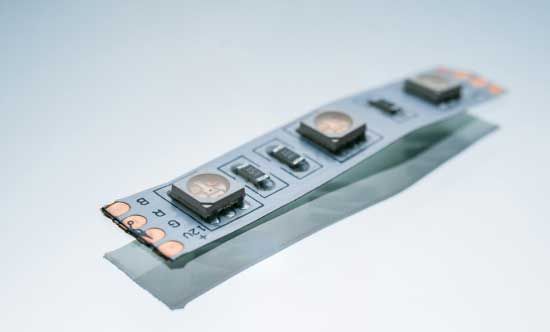
PCB Trace Width and Spacing – DFM
Optimizing printed circuit board (PCB) trace widths is a crucial aspect of PCB design that affects the performance, reliability, and manufacturability of the final product. Proper trace width selection ensures that your PCB can handle the required current load without overheating, reduces electromagnetic interference (EMI) and meets manufacturing tolerances.
Let’s learn more about the importance of optimizing PCB trace widths and how this is achieved.
Understand the Basics
The trace width on a PCB is the width of the conductive paths that connect different components on the board. These traces carry electrical current, and their width affects how much current they can safely carry. The American Wire Gauge (AWG) system is often used to compare trace widths and their current-carrying capacity.
AWG is the standard way to indicate wire size in North America. The larger the number, the smaller the wire diameter and thickness. The standard size is 0000 AWG, and the smallest standard size is 40 AWG. A larger size wire can safely conduct more electricity than a smaller size wire.
Key Considerations for Trace Width Optimization
The primary factor in determining the optimal PCB trace width is the amount of current that the trace needs to carry. Higher currents require wider traces to avoid excessive heating and potential damage. Tools like the IPC-2221 generic standard for printed board design can provide guidelines for trace width based on current load.
A related consideration is the permissible temperature rise in the trace. This depends on the surrounding environment and the materials used in the PCB. Generally, a temperature rise of 10°C to 20°C above ambient is considered acceptable for most applications.
For high-speed or high-frequency circuits, the trace width can also affect signal integrity. Impedance matching becomes critical, and the trace width, along with the PCB material and the trace height above the ground plane, determines the characteristic impedance.
Furthermore, the capabilities of your PCB manufacturer also limit the minimum and maximum trace widths. Finer traces allow for more compact designs but require higher precision in manufacturing, which can increase costs.
Practical Tips for Optimizing PCB Trace Widths
Modern PCB design software includes tools for calculating optimal trace widths based on current requirements, material properties and thermal considerations. Sonic Manufacturing uses these tools to simplify the optimization process. We refer to standards like IPC-2221 for general guidelines on trace width and spacing. For specific applications, additional standards may apply.
While narrower traces can make your PCB more compact, it’s important that it doesn’t compromise reliability. Adequate spacing between traces is also necessary to prevent short-circuits and reduce EMI. We also rigorously test designs under real-world conditions, as well as design for the maximum expected current to accommodate future modifications or additions to the circuit without the need for redesign.
PCB Assembly and Manufacturing Services
Optimizing PCB trace widths is a critical step in the PCB design process, impacting the electrical performance and reliability of the final product. By considering factors such as current-carrying capacity, temperature rise, signal integrity, and manufacturing limitations, designers can ensure that their PCBs are both functional and manufacturable.
At Sonic Manufacturing, we work with our customers to identify possible weaknesses in PCB design and can help identify failures due to factors like trace width and spacing. Designing for manufacturability and new product introduction go hand-in-hand. To learn more about our PCB assembly and manufacturing services, contact us today. We’ll be happy to provide you with a quote for your next PCB project!
CALL FOR A QUOTE
(510) 580-8500
OR EMAIL:
Sales@Sonicmfg.com
